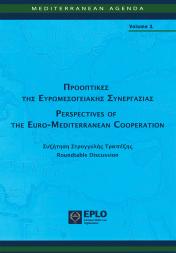
Public Law in Transition
President of the European Scientific Council (EGPL) of the EPLO, Emeritus Professor, Scuola Normale Superiore, Emeritus Judge of the Constitutional Court of Italy
Public law has traditionally played a central role in shaping institutions, providing all the resources for the development of the State. However, as a result of the pressure stemming from various, and conflicting, causes, public law is slowly losing its “raison d’être” - its center, the State. In trying to answer the question of whether public law has reached the final stage of its life, the main trends of the field are evaluated: 1) State sovereignty is replaced by a network of intermingling regulatory bodies; 2) Whereas, in the past, the Constitution and the administration were the realm of stability, this is no longer the case. On the contrary, public law must adjust to a changing world; 3) Public law was the product of the State. Now it has become dependent on other powers of transnational, global, and local dimensions; 4) The walls between Private and Public are collapsing; 5) Traditionally, public law was based on the bipolarity between the “administré” and the “autorité publique”. Today, the public landscape is dominated by multi-polar relations among a plurality of autonomous public bodies and conflicting private interests; 6) These changes have important implications for the study and teaching of public law. Based on these trends, in order to be able to answer the question of what we can see in the future of public law, one has to start reconceptualizing the State, as the State has played, is playing and will play a central role in public law.
Le droit public a traditionnellement joué un rôle central dans la formation des institutions, en fournissant toutes les ressources pour le développement de l’Etat. Cependant, sous la pression qui résulte des causes diverses et contradictoires, le droit public perd lentement sa “raison d’être” - son centre, l’Etat. En tentant de répondre à la question de savoir si le droit public a atteint le stade final de sa vie, les principales tendances du domaine sont évaluées: 1) la souveraineté de l’Etat est remplacée par un réseau d’organes de régulation qui s’entremêlent; 2) Bien que, dans le passé, la Constitution et l’administration aient été le domaine de la stabilité, ce n’est plus le cas. Au contraire, le droit public doit s’adapter à un monde qui change; 3) Le droit public était le produit de l’Etat. Maintenant, il est devenu dépendant d’autres pouvoirs de dimension transnationale, mondiale, et locale; 4) Les murs entre le Privé et le Public s’éffondrent; 5) Traditionnellement, le droit public se fondait sur la bipolarité entre l’“administré” et l’“autorité publique”. De nos jours, le paysage public est dominé par des relations multipolaires entre une pluralité d’organes publics autonomes et des intérêts privés conflictuels; 6) Ces changements ont des implications importantes pour l’étude et l’enseignement du droit public. Sur la base de ces tendances, afin d’être en mesure de répondre à la question de savoir ce qu’on peut voir dans l’avenir du droit public, il faut commencer à reconceptualiser l’Etat, parce que l’Etat a joué, joue et va jouer un rôle central dans le droit public.





















